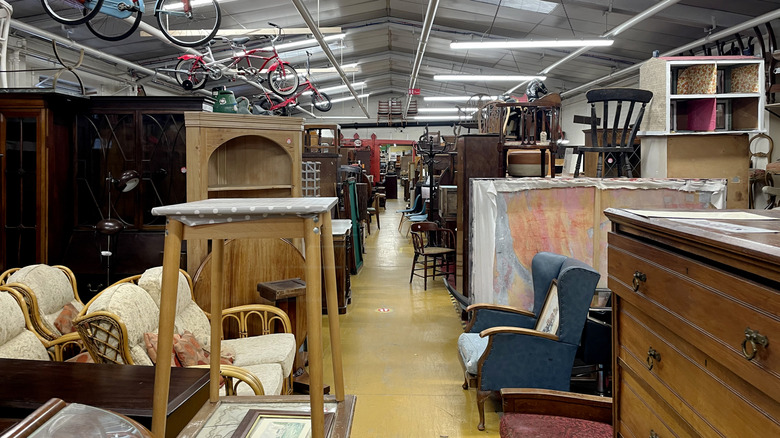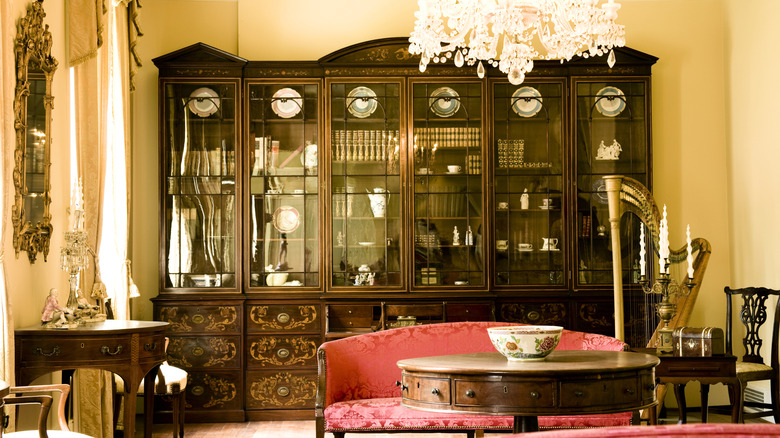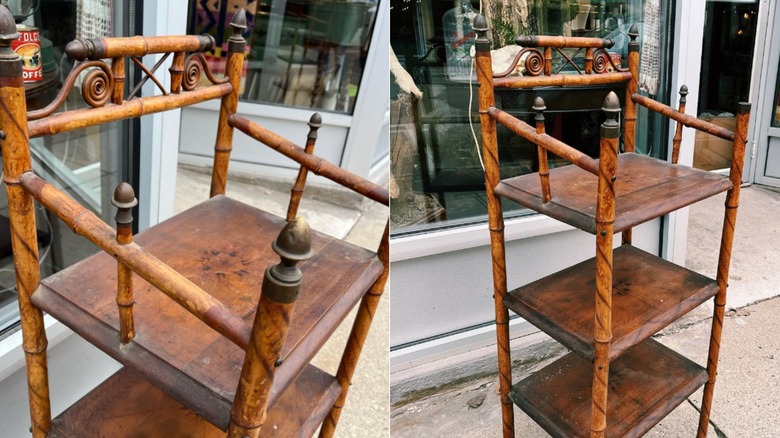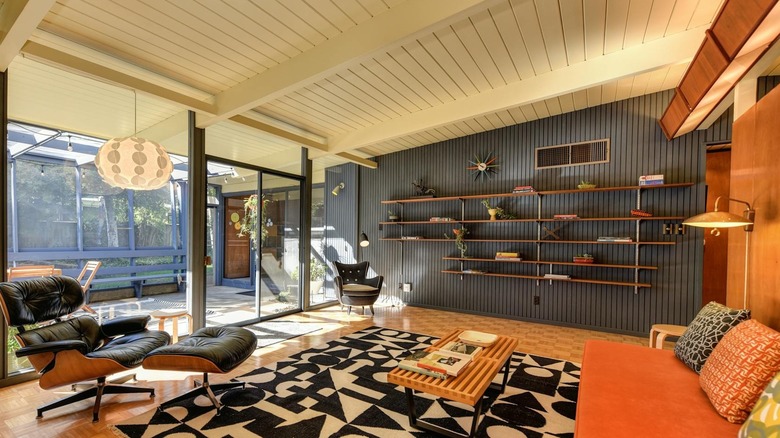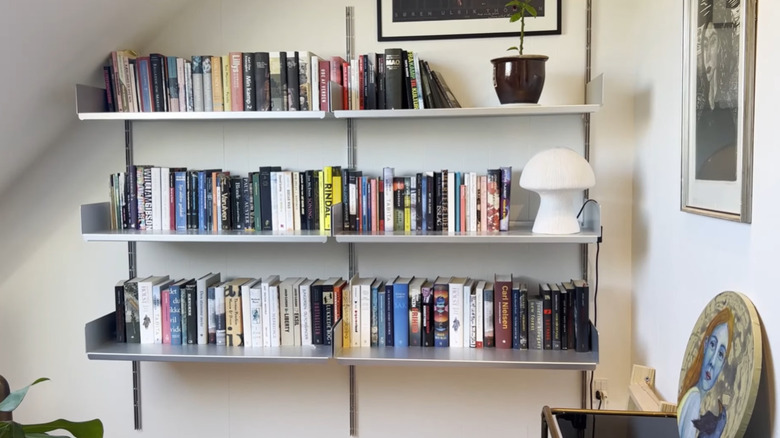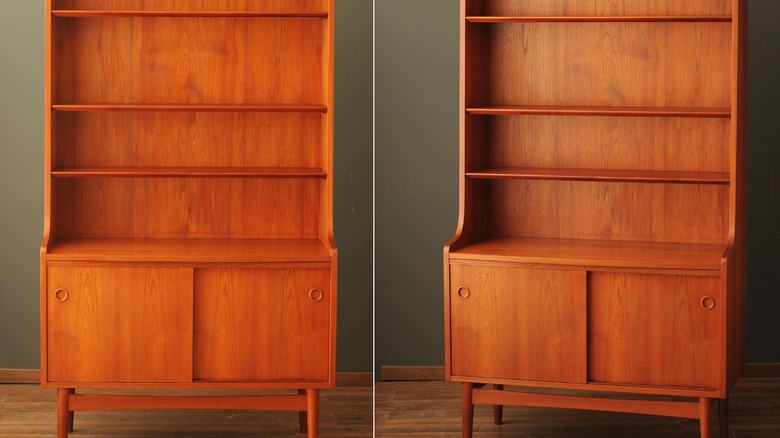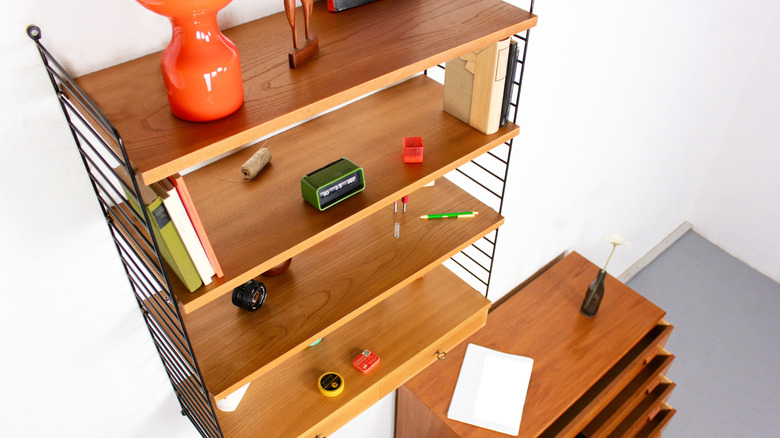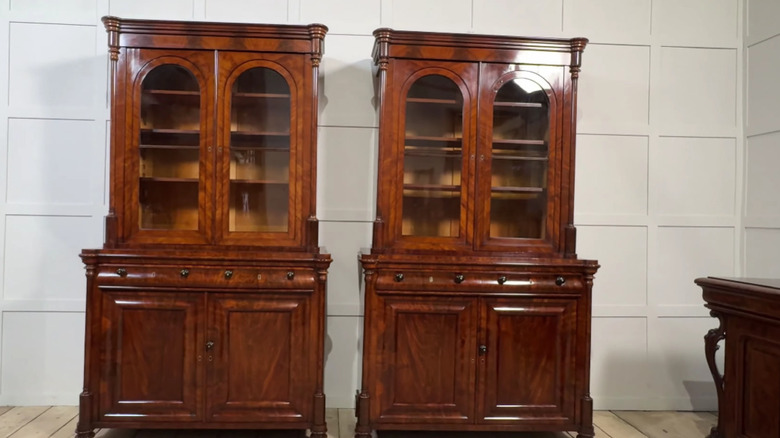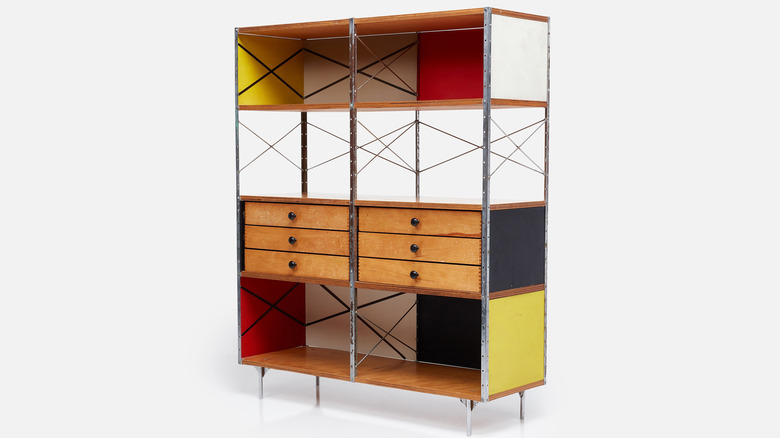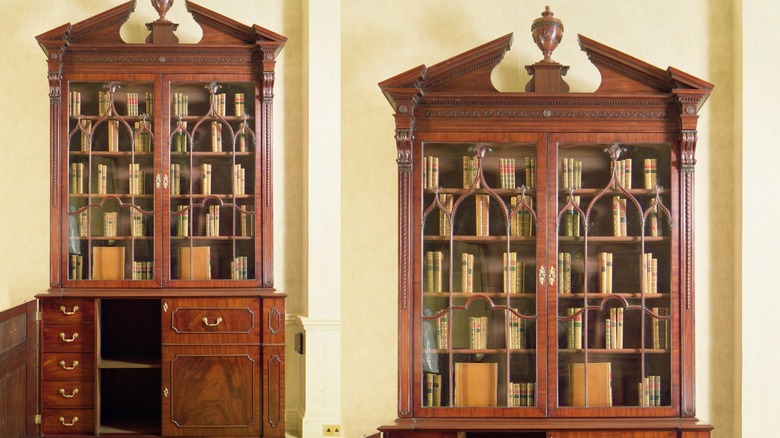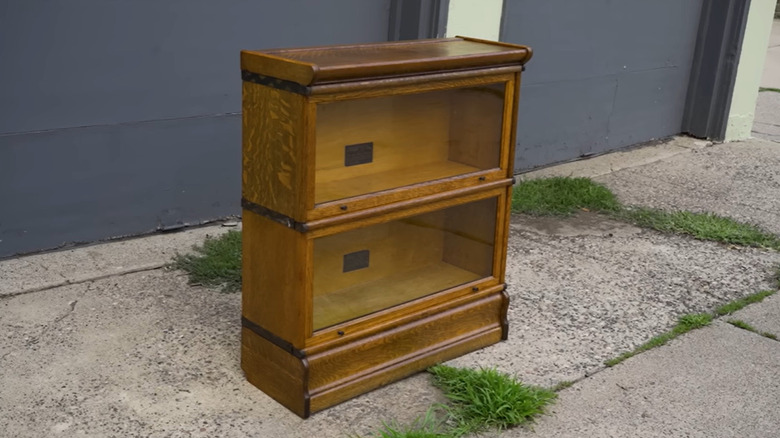10 Valuable Vintage Bookshelves You Should Look Out For At Thrift Stores And Estate Sales
Thrift stores and estate sales are often brimming with vintage clothes, antique dishware, fine furniture, and forgotten collectibles. The charm lies in their unpredictability — for a fraction of the valued price, you can find that rare, hard-carved, hardwood piece or that mid-century unit that collectors jump at. Whether you're a casual browser or a dedicated thrifter, the potential to uncover something valuable or personally meaningful is always there.
Among the most overlooked gems in thrift stores and estate sales are bookcases, bookshelves, and wall units, pieces often dismissed as just utilitarian furniture, but sometimes worth far more than they seem. Solid wood bookcases, particularly those made of oak, cherry, walnut, or mahogany, can be surprisingly well-crafted and valuable, especially if they feature certain elements of carpentry or have origins with famous historic furniture makers. Mid-century modern styles from the post-World War II era of the 1950s to the 1970s are also highly sought after, and spotting a piece by a known designer or manufacturer can turn a bargain find into a piece worth hundreds, if not thousands. Even if not collectible, many thrifted bookcases can be easily restored or repurposed, giving your space a stylish upgrade at a fraction of the cost of new furniture. Whatever your taste, keep your eyes peeled for these telltale signs of a hidden treasure.
Victorian bookcases
If you come across any wooden bookcases at the thrift store or estate sales with telltale signs of Baroque origins, like ornate inlays, heavy ornamentation, or Asian design techniques, then you might have scored a great deal. A furniture style en vogue in 17th- and 18th-century Europe, these lavishly designed bookcases are incredibly well-built, and at auction or in an antique store, they can fetch prices well into the tens of thousands. Simpler designs can even be as expensive as $4,000, so don't pass these up if you have a suspicion that they're genuinely from the 1600s or 1700s.
Burnt Bamboo
A Victorian design element that was popular into the Aesthetic Movement (late 19th century), burnt bamboo has a similar appearance to burled wood or the Japanoiserie pieces popular during the era. The purpose is to look weathered but finished with a high gloss, and its signature streaky patterns make the material highly desirable for collectors. Burnt bamboo bookcases and etageres from the Victorian era are spendy pieces, with auction prices floating in the $2,000 mark. So, if you find it at the thrift store, be sure to jump on it if you get the chance.
Herman Miller bookcases
Jumping forward in time into the mid-century modern era of design, companies like Herman Miller were at the top of the furniture game. A firm with a history of more classical furniture crafting up until the 1930s, star designers like Gilbert Rohde and George Nelson leaned into modernist Bauhaus thinking, embracing geometry, sleek lines, and modularity. Their bookcases and wall units were equally slick, characterized by the use of hardwood and utilitarian hardware. Today, original Nelson or Rohde pieces with maker's labels go for many thousands of dollars, so happy hunting at estate sales!
Vitsoe Universal Shelving System
Another streamlined, modular wall-unit, borne from mid-century modernism, the Vitsoe 606 Universal Shelving System is a minimalist storage solution known for its aluminum E-Track and white, wood veneer, or silver shelves. Designed by Dieter Rams in 1960, auction pages reflect price tags of around $3,000 per piece and higher. At thrift stores or estate sales, look for Vitsoe's characteristic wall-mounted aluminum rails, matching metal brackets, and a label or stamped branding that says "Vitsoe" or "Made in Germany" somewhere on the unit. If you find one designed by Rams, you may have hit the MCM jackpot.
Danish teak bookcases/units
Danish teak wall units and bookcases are also iconic MCM pieces that combine those clean lines emblematic of the 1950s to 60s, with the organic touch of wood. Originally conceived by Paul Cadovius, the original wall units and bookcases embraced modern sensibility but softened the design with teak and slim metal hardware. Most originals should bear a maker's mark from designers such as Arne Vodder, Kai Kristiansen, or Hans J. Wegner, which often command a premium at auctions. Teak was an mid-century standout, something to keep in mind when decorating your MCM home.
String Shelving System
The String shelving system, designed by Kajsa and Nils Strinning in 1949, was a Scandinavian modular shelving unit that's immediately recognizable for its slim metal side panels and lightweight wooden shelves. It was considered an innovative, flexible, and versatile design at the time, allowing for easy customization. In thrift stores, hunt for the original system's design by carefully looking for its signature wire ladder brackets and wooden planked shelves, often in teak, oak, or painted finishes. Even the smallest units can cost you $400 or more from an antique store, with some units costing over $6,000.
Empire bookcases
Taking a trip back in time, Empire bookcases are early 19th-century pieces created during the reign of Napoleon Bonaparte. These bookcases were inspired by classic antiquity and feature clean lines, symmetrical shapes, and opulent decorative elements like columns and gilded accents. Typically made from hardwood, these bookcases have an undoubtedly elegant aesthetic. Key identifiers include classical motifs of Greek or Roman origin, as well as brass inlays. You'll be hard-pressed to find an Empire bookcase for under $3,000 at auction or antique store, so if you see it at the thrift store, don't miss out.
Eames Storage Units
The Eames Storage Unit, designed by Charles and Ray Eames in the 1950s, is another iconic modular shelving system featuring metal frames, plywood panels, and colorful sliding doors or drawers. Sold through Herman Miller, this unit's industrial, yet whimsically playful design makes it a mid-century modern charmer for many collectors. Proper vintage pieces in antique stores or on auction sites regularly run over $10,000, so, when hunting in thrift stores, look for the distinctive metal grid frames combined with lightweight wooden components and brightly hued doors. Even better if you find an original Eames label or markings.
Chippendale Bookcases
Chippendale furniture became all the rage in the mid-18th century, named for English cabinetmaker Thomas Chippendale. Classified in three different types — Gothic, Rococo, and Chinese — bookcases of this design era emphasized craftsmanship and natural wood. Rococo bookcases, in particular, leaned into simplicity, differing from other Victorian designs, which preferred opulent ornamentation. Gothic Chippendale pieces were outfitted in typical elements like S-curves and tracery. Larger Chippendale bookcases will cost well into the five figures, so if you see an original piece at the thrift store or estate sale for your castlecore home design palette, then snag it!
Barrister bookcases
The history of barrister bookcases is a fascinating one: in the late 19th century, barristers (aka lawyers) needed mobile bookcases that they could take with them from court to court for research and documents. Therefore, the barrister bookcase — a series of wooden, stackable, book storage units — was invented. One major characteristic of barrister bookcases is the top-hinged doors on each shelf, some of which are inlaid with glass, while others are solid. They can range from $1,000 to $4,000 at auction, though at thrift stores or estate sales, you may be able to find one for far less.
